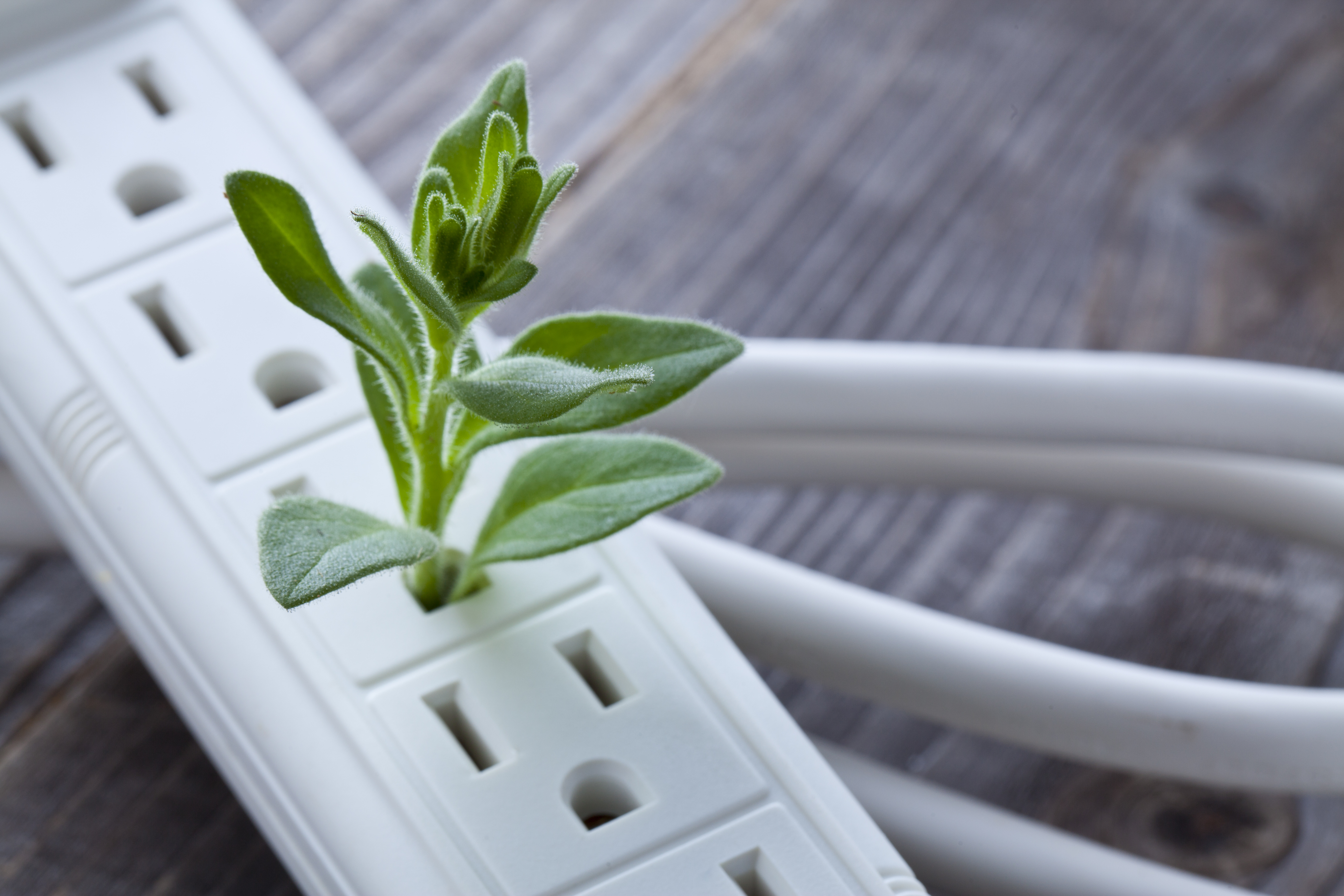Reduce Your Home’s Carbon Impact

From unprecedented wildfires to a record-breaking hurricane season, climate change is increasing the intensity of weather events. The largest source of harmful greenhouse gas emissions in the U.S. comes from burning fossil fuels for heat, electricity, and transportation.
Since the pandemic hit many of us drove less, as office buildings, schools and businesses closed their doors temporarily. Fewer vehicle emissions let our planet breathe, but it created another challenge –– a soaring demand for residential energy. From working remotely to distance learning to evenings at home, the average American household increased its electricity use by 22 percent.
With the end of the pandemic now in sight, how can we reduce our carbon impact as we wait for society to return to some sense of normalcy?
Here are a few things you can do at home:

Start with Your Lightbulbs
You’ve heard it a hundred times, but changing out incandescent lightbulbs for LED makes a huge difference. Incandescent lights waste as much as 90 percent of their energy due to the heat they emit. LEDs (light-emitting diodes) are more expensive, but they can last up to 25 times longer. These lightbulbs are also preferred over compact fluorescent lamp (CFL) bulbs, which contain mercury and emit up to 80 percent of their energy as heat.
Get in the habit of turning off lights when you leave the room, and encourage your kids to do the same, especially while we spend a majority of our time at home.
Check Drafty Windows and Doors
Outside air often seeps in while inside air escapes through leaky window frames and beneath doors. During colder months, this loss can account for 10 to 25 percent of your heating costs. Check for drafts by feeling for air or lighting a stick of incense and moving it around the edge of your windows, looking for an interruption in the rising smoke.
When you find the problem, one quick fix is to scrape away dried caulk and apply a fresh coat of acrylic latex. Add weather stripping to the inside. If your windows or doors are older, consider installing new impact-resistant options that not only provide energy savings, but also protect your home from intruders and intense storms.
Insulate or Replace Your Outdated Water Heater
Did you know that water heaters more than 10 years old are often lined with fiberglass insulation, which is much less effective at preventing heat loss than the foam used on more recent versions? Find out how old your hot water heater is by checking the manufacturing date on the side of the tank, or simply touch the tank and see if it feels warm. If it does feel warm, it’s lacking insulation.
The first thing to do is wrap your tank in a precut blanket (some utility companies will give you a rebate on one or even install one for free). Another short-term solution is to fit foam sleeves or insulating tape around the pipes.
However, if your hot water tank is a decade or more old, it’s time to think about replacement options. With proper maintenance, a water heater tank is only expected to last 12 years. Other energy-saving options, like tankless water heaters, can last 20 years or more — so keep this in mind as you consider an upgrade. Learn all about your water heater options here.

Check Leaky Ductwork
Ducts are the unseen backbone of your home’s heating and cooling efficiency. Over time, the adhesive tape that seals the joints between sections of your ductwork can dry out. This allows hot or cold air to escape, which causes you to use more energy and increases your bills. If contractors or other tradesmen are working in areas where your ducts are, such as attics, crawlspaces, or basements, damage can also occur.
If your ducts are visible, you can check for leaks by shining a bright flashlight at the junction where ducts connect with registers. If you notice dust on the exterior of the duct that appears to be blown away, this indicates a leak. You can patch small holes with a mastic sealant and use HVAC foil tape to seal joints that connect the different sections.
If you can’t access your ductwork, it’s time to call in a professional for a duct cleaning and inspection. Having your ducts cleaned also reduces mold, air contaminants, and debris from entering your home’s living areas.
Upgrade Your Home Now, Pay Later
We know you have better things to spend your money on than high-efficiency lightbulbs, hot water heaters, and duct maintenance. PACE financing offers property owners a way to pay for efficiency upgrades like these, and repay the cost over time as part of your property tax bill.
This Earth Day, do your part to reduce your home’s energy use and lower your carbon impact –– and enjoy savings on your utility bill, too.




